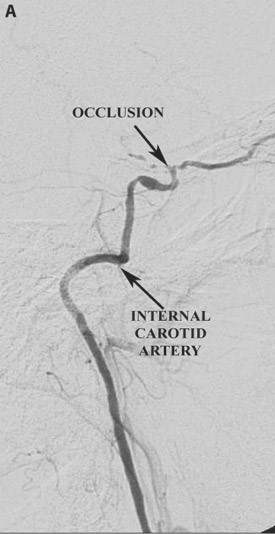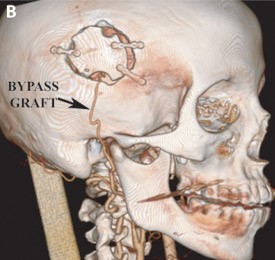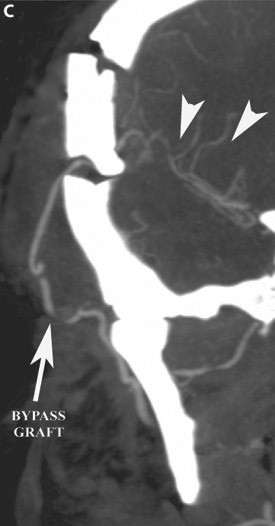Why Would Someone Need an Extracranial-Intracranial Bypass?
An extracranial-intracranial bypass is used to treat a select group of patients. Some patients who have experienced strokes attributed to poor cerebral blood flow (cerebral hypoperfusion) may benefit from a bypass procedure. Other patients with complex vascular conditions requiring closure of the carotid artery may need a bypass procedure as well.
A) Pre-operative lateral angiogram demonstrating occlusion of the supraclinoidal segment of the internal carotid artery.
B) Post-operative 3-D reconstruction of a CT angiogram demonstrating a patent bypass graft. In this case the bypass graft is the superficial temporal artery (STA), and it is joined to the middle cerebral artery (MCA), restoring blood flow to the brain. This type of bypass is called a STA-MCA bypass.
C) Post-operative coronal CT angiogram demonstrating the patent bypass graft and the revascularized middle cerebral artery territory (arrowheads).






